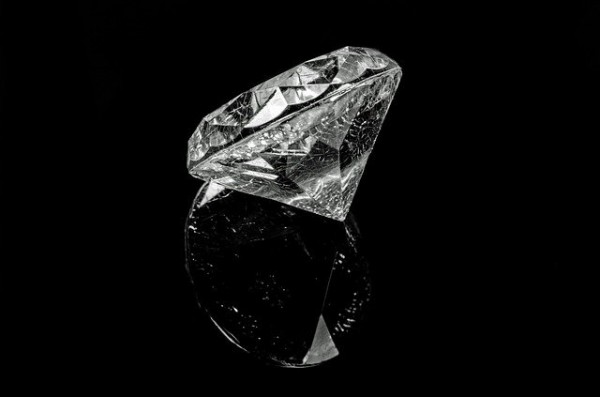By Telegiz , | April 14, 2020
- PREV
- Image1of0
- NEXT

Image by PublicDomainPictures from Pixabay
Like Us on Facebook
Researchers from the University of California, along with other scientific institutions, have successfully designed plate-nanolattices nanometer-sized carbon structures that are deemed to be better and stronger than diamonds when talking about its ratio of strength to density.
Scientists successfully develop a carbon nanostructure stronger than diamonds
In this recent study involving Nature Communications, these scientists reported success in mentally visualizing and fabricating the material which is made up of closely connected cell plates, rather than just the cylindrical trusses that are commonly used in such structures over the past few decades.
According to Phys, corresponding author and a UCI researcher in mechanical and aerospace engineering, Jens Bauer said that "Previous beam-based designs, while of great interest, had not been so efficient in terms of mechanical properties. This new class of plate-nanolattices that we've created is dramatically stronger and stiffer than the best beam-nanolattices."
The paper revealed that the team's design has improved on the average performance of cylindrical beam-based architecture by at least 639% in strength and 522% in rigidity.
They have been using microscopes and direct laser writing
Representatives of the architected materials laboratory of Lorenzo Valdevit--who is a UCI professor of materials science and engineering, and mechanical and aerospace engineering--verified and documented their discoveries using a scanning electron microscope, as well as various technologies that were provided by Irvine Materials Research Institue (IMRI).
The lead author of the study and a UCI graduate student in materials science and engineering said that "scientists have predicted that nanolattices arranged in a plate-based design would be incredibly strong, But the difficulty in manufacturing structures this way meant that the theory was never proven until we succeeded in doing it."
Bauer also said that the scientist's achievement and discovery rely on a complex 3D laser printing process, called two-photon lithography direct laser writing. The material ultimately becomes a solid polymer where two photons meet, as an ultraviolet light-sensitive resin is being added layer by layer throughout the process. This kind of technique can render cells that repeat and become plates with faces that are as thin as 10 diameters.
Another direct laser writing, named two-photon polymerization, is also being used. Bauer said that "it is a laser that is focused inside a droplet of an ultraviolet-light-sensitive liquid resin, the material becomes a solid polymer where molecules are simultaneously hit by two photons. By scanning the laser or moving the stage in three dimensions, the technique is able to render periodic arrangements of cells, each consisting of assemblies of plates as thin as 160 nanometers."
Nanolattices shows great promise for engineers that deal with structures, specifically in aerospace. This is because they have been hoping that this combination of low mass density and strength can greatly enhance and boost spacecraft and aircraft performance in the future.
This project was funded and supported by the Office of Naval Research and the German Research Foundation.
-
Use of Coronavirus Pandemic Drones Raises Privacy Concerns: Drones Spread Fear, Local Officials Say

-
Coronavirus Hampers The Delivery Of Lockheed Martin F-35 Stealth Fighters For 2020

-
Instagram Speeds Up Plans to Add Account Memorialization Feature Due to COVID-19 Deaths

-
NASA: Perseverance Plans to Bring 'Mars Rock' to Earth in 2031

-
600 Dead And 3,000 In The Hospital as Iranians Believed Drinking High-Concentrations of Alcohol Can Cure The Coronavirus

-
600 Dead And 3,000 In The Hospital as Iranians Believed Drinking High-Concentrations of Alcohol Can Cure The Coronavirus

-
COVID-19: Doctors, Nurses Use Virtual Reality to Learn New Skills in Treating Coronavirus Patients







